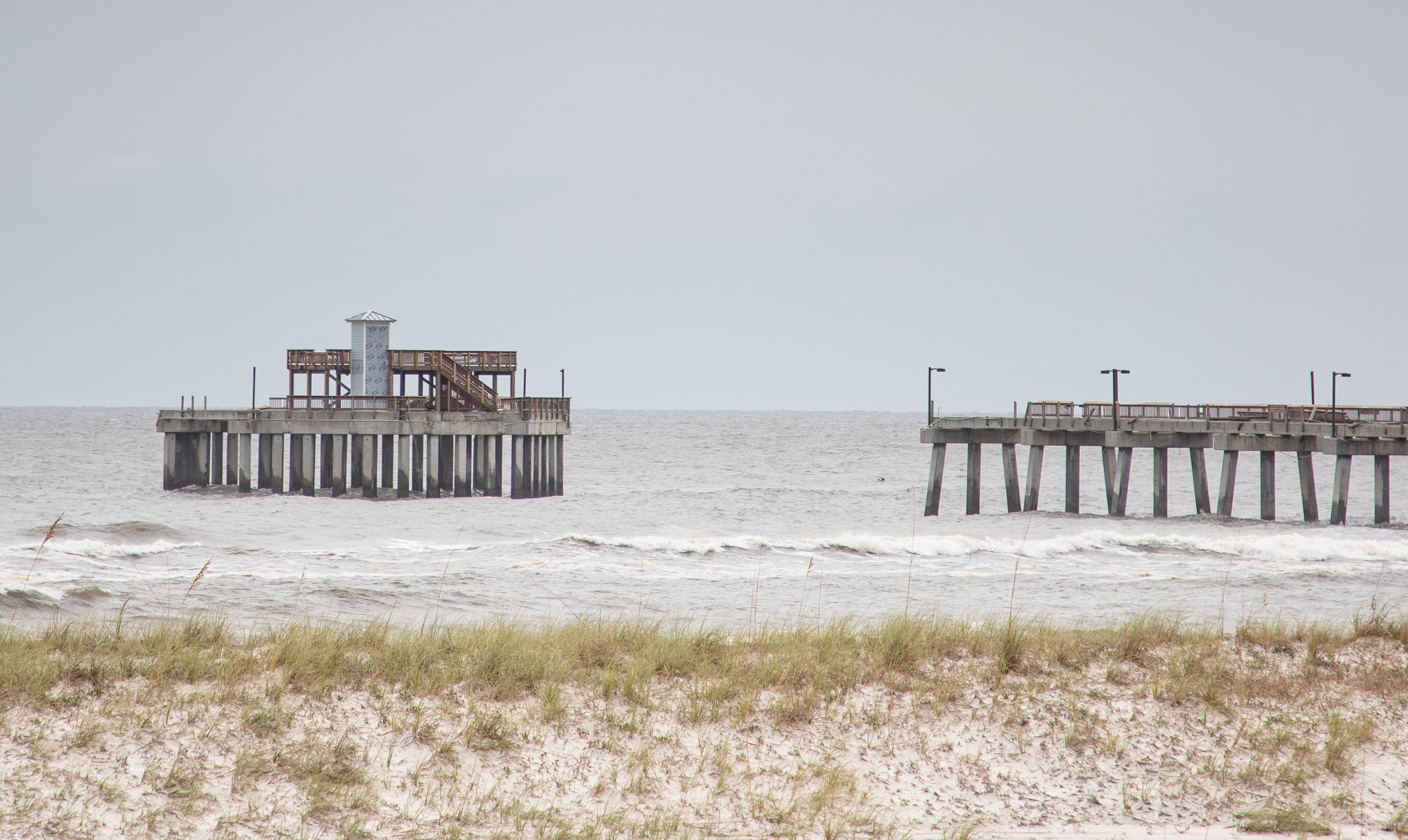By DAVID RAINER, Alabama Department of Conservation and Natural Resources
One aspect of living on Alabama’s beautiful Gulf Coast is the realization that the best-laid plan is no match for Mother Nature.
The original plan was to gather on September 16 at the Gulf State Park Pier to celebrate the grand reopening of the 1,542-foot pier after a $2.4 million renovation.
Although I’m a veteran of many tropical storms and hurricanes in my 28 years on the Gulf Coast, including back-to-back hits by Ivan and Katrina, the system that turned into Hurricane Sally threw me and many Gulf Coast residents a wicked curveball.
Off to bed with a predicted peak of 85 mph winds, I was awakened by an ominous roar. With one peek through the high windows on our vibrating front door, it was obvious this was not a clone of Hurricane Danny from 1997 that dumped copious amounts of rain on the area but did not have the wind-damage potential of Sally.
As Gulf Shores Mayor Robert Craft said, “Sally sucker-punched us.”
Sally made landfall in Gulf Shores in the early hours of September 16 as a strong Category 2 hurricane with winds clocked at 105 mph. A wind-speed detector on a nearby tower clocked a 121-mph gust.
However, Sally’s brutality was magnified by her crawling forward speed of 2 mph, which made the incessant winds seem to last forever. Like my friend Dwight Lores said, “A human can easily walk at 3 miles per hour. That’s why Sally did so much damage.”
When the first hint of sunrise allowed a minimal assessment through the aforementioned door, trees were down in every direction. Unlike many Baldwin County homes, thankfully ours was not damaged by any of the falling trees, but it was almost three days before we could even leave our driveway. On the fourth day, a utility crew from Warren County, Kentucky, restored our power, a remarkable feat considering the extent of the damage. All hail to a hot shower.
Of course, I prayed for the best for everybody on the Alabama coast, but I feared it was not going to be the outcome we wished, especially for those structures vulnerable to storm surge.
I soon got word through the little cell service available that the northern Gulf Coast’s premier fishing and educational pier, which opened in 2009 after Ivan razed the previous pier, had succumbed to the constant battering of Sally’s surge.
The section of pier closest to the end octagon was gone. The majority of the blowout deck panels were scattered all along the sugar-sand shoreline.
The good news is the new Lodge at Gulf State Park and nearby structures were relatively unscathed because those buildings were designed to withstand winds of up to 150 mph.
Chris Blankenship, Commissioner of the Alabama Department of Conservation and Natural Resources (ADCNR), and Greg Lein, Alabama State Parks Director, were able to perform cursory assessments late last week.
“We had damage in places we didn’t expect, and in other places where I expected to have a lot of damage, it turned out to be not as bad,” said Commissioner Blankenship, who toured the area with Governor Kay Ivey last Friday. “The damage to the pier is the most obvious that everybody has seen on TV and had the most questions about. We were very surprised by the amount of damage to the pier. The cabins at Gulf State Park on Lake Shelby took a beating. I’m afraid a lot of them will be total losses.
“But I was pleasantly surprised by how the dune system held up on the beach. And the Lodge at Gulf State Park, which was built to fortified building standards, fared very well during the storm. The FEMA (Federal Emergency Management Administration) administrator was there, and we showed him the Lodge. He was very impressed with the resilience of the Lodge and how building to that standard has a big impact on the recovery.”








